We left Melbourne on the most beautiful autumnal day, off into the anywhere of airports, taxis and planes. We’ve arrived in Copenhagen. No one has lost their bags and we have managed leave the airport quickly. Our taxi has taken us to the wrong hotel, ordinarily this wouldn’t be a problem. However, our itinerary is back to back and the first project visit is within two hours of landing and closes at 4pm promptly, it is a church after all.
Eventually we arrive at the hotel with 15 mins to spare, hurriedly most of us check in before another taxi is booked to take us to the Bagsvaerd Church. The taxis are already at the hotel as we disembark the first. This is no doubt a perfect opportunity to order nine different coffees in the hotel foyer. The taxis can wait, after a 21 hour flight simple pleasures seem important and coffee is essential (a shower would also be good).
Nevertheless, everyone is buoyant after their coffee and we scrape together our collective knowledge on everything related to Jorn Utzon in order to be somewhat prepared to meet Jan Utzon at the Church. Our ability to gather critical facts is somewhat impaired by the onset of jet lag, the effect of the coffee isn’t working as well as some of us hoped.
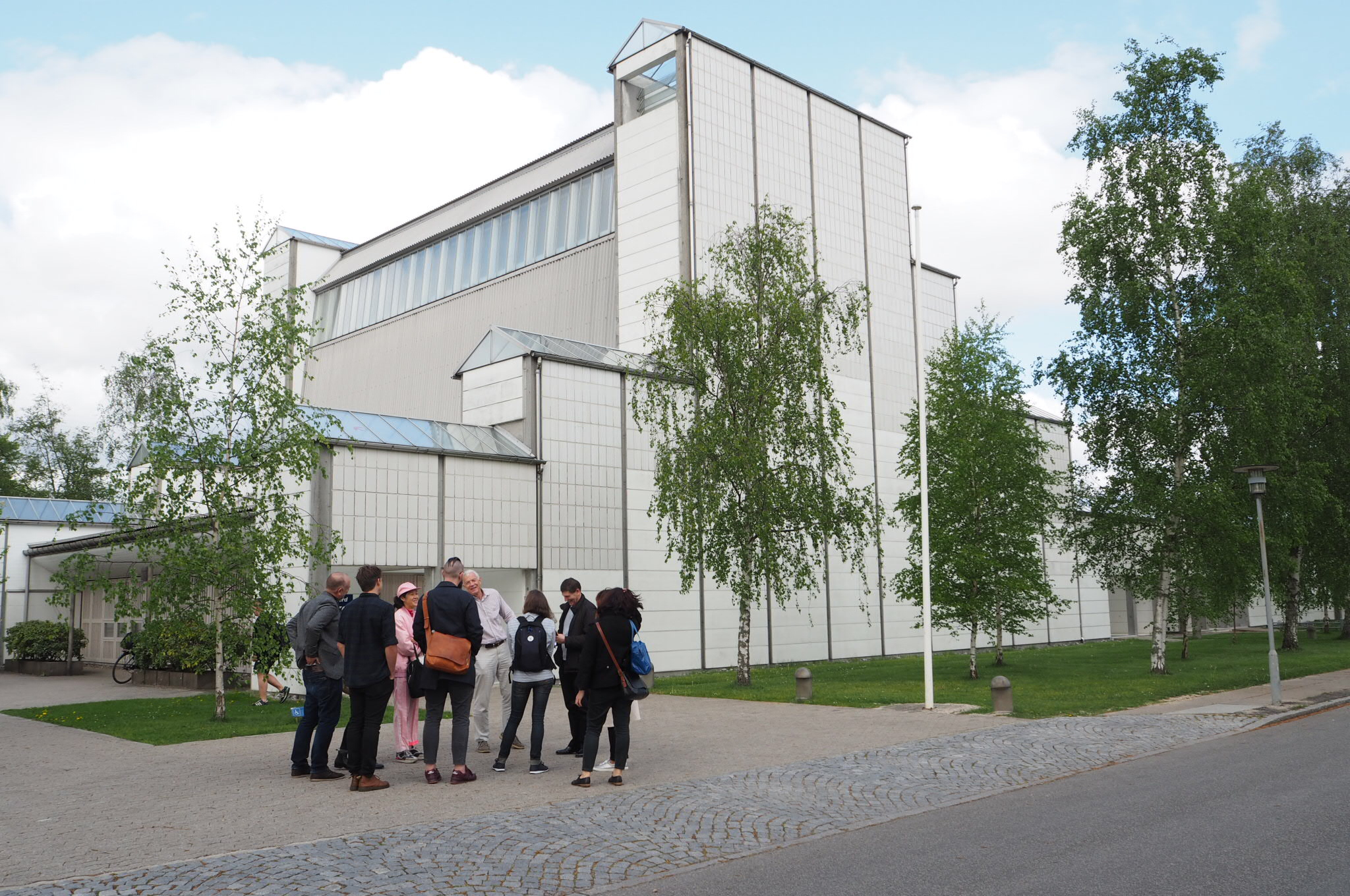
Bagsvaerd Church is in a quiet suburb and there is no one in sight as we topple out of the taxis, we are however on time. Jan Utzon emerges from the small white washed pine door to greet us. Jan ushers our group into the first vestibule and gracefully describes the building, its materiality, construction methodology, detail and history. Jan talks effortlessly about a project that he knows intimately, he made the first model in his fathers office during his final year studying and took over the project management soon after. Having been involved with the project for so long he has wonderful storeys about about the day to day and changes that have occurred over time. He recalls a few years ago the interior was repainted and the painter proudly showing him the fine work he had done painting all of the raw exposed steel handrails, this wasn’t meant to be and the poor man spent a month stripping back the paint. The hand rails are exquisite and still retain their patina unaffected by the small mishap.
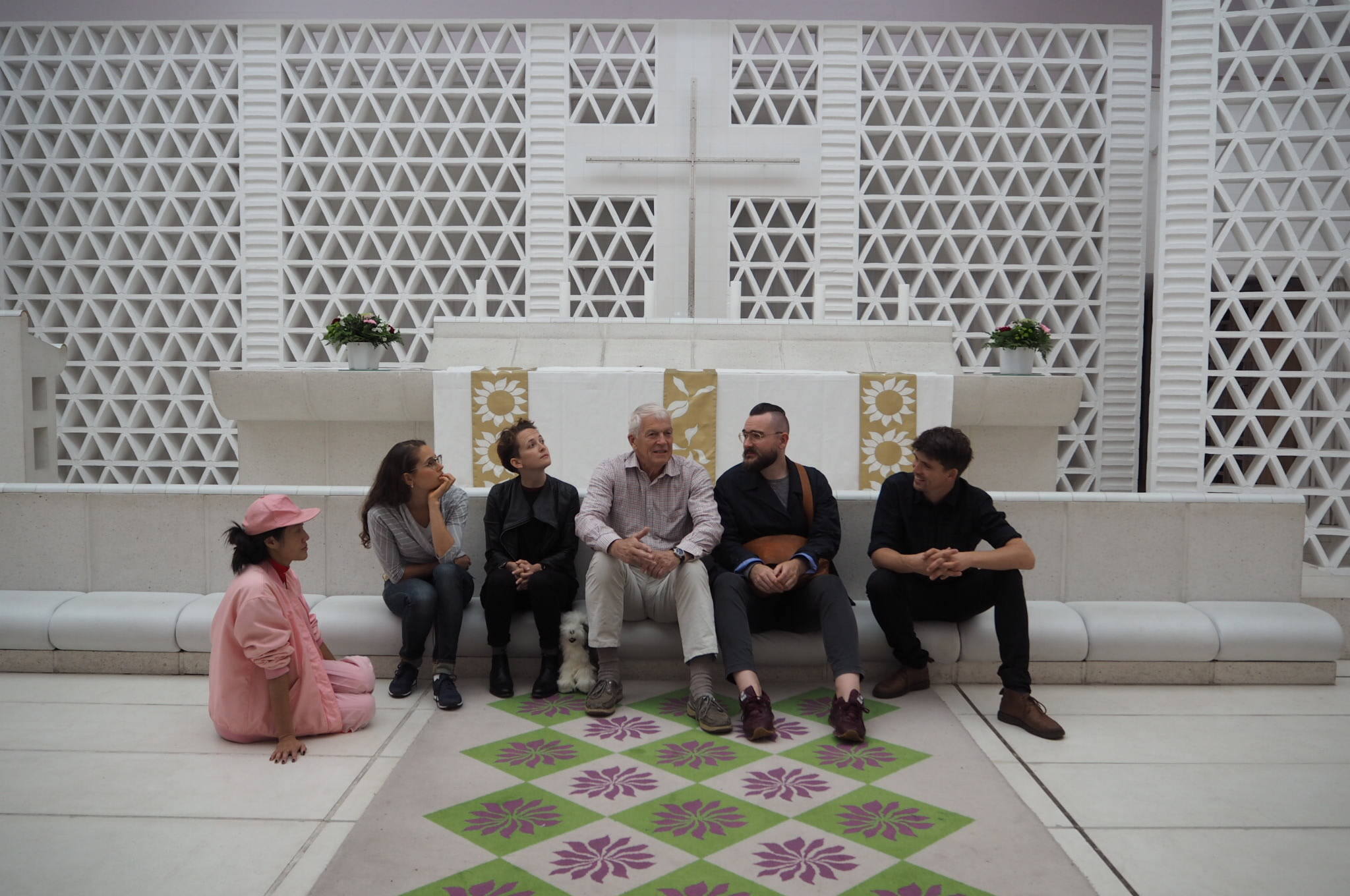
It’s a project that was holistically designed by the architects including the furntiutre and textiles, there are stories about these as well but that might have to wait for another time. I asked Jan where the bells came from, bells are interesting objects and often have their own history. These were made in a foundry in Denmark as was every part of the building, some of the makers still work with Utzon to repair items designed for the church. The white patterned carpet was remade by the same weavers and looms a few years ago.
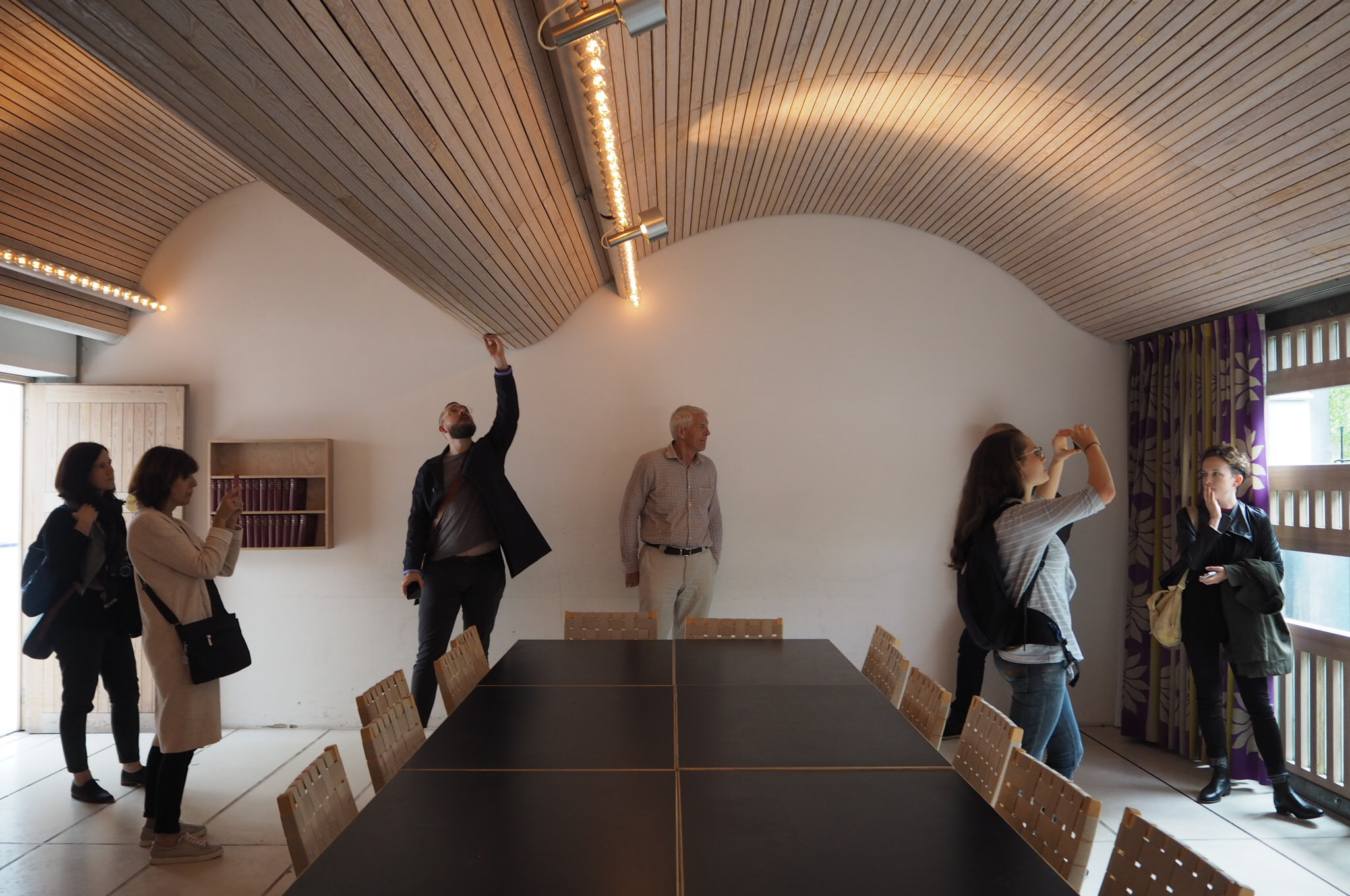
The quality of light brought into the space through the improbably thin concrete shell roof is extraordinary. While we all know the project interior, most of us have never seen the exterior of the building, it is surprisingly blank and defensive and predicted the widening of a road which never eventuated. The predominantly blank masonry perimeter is composed of matte pre cast concrete and gloss enamel tiles which reflect the interior undulations of the shell roof in an abstract pattern.
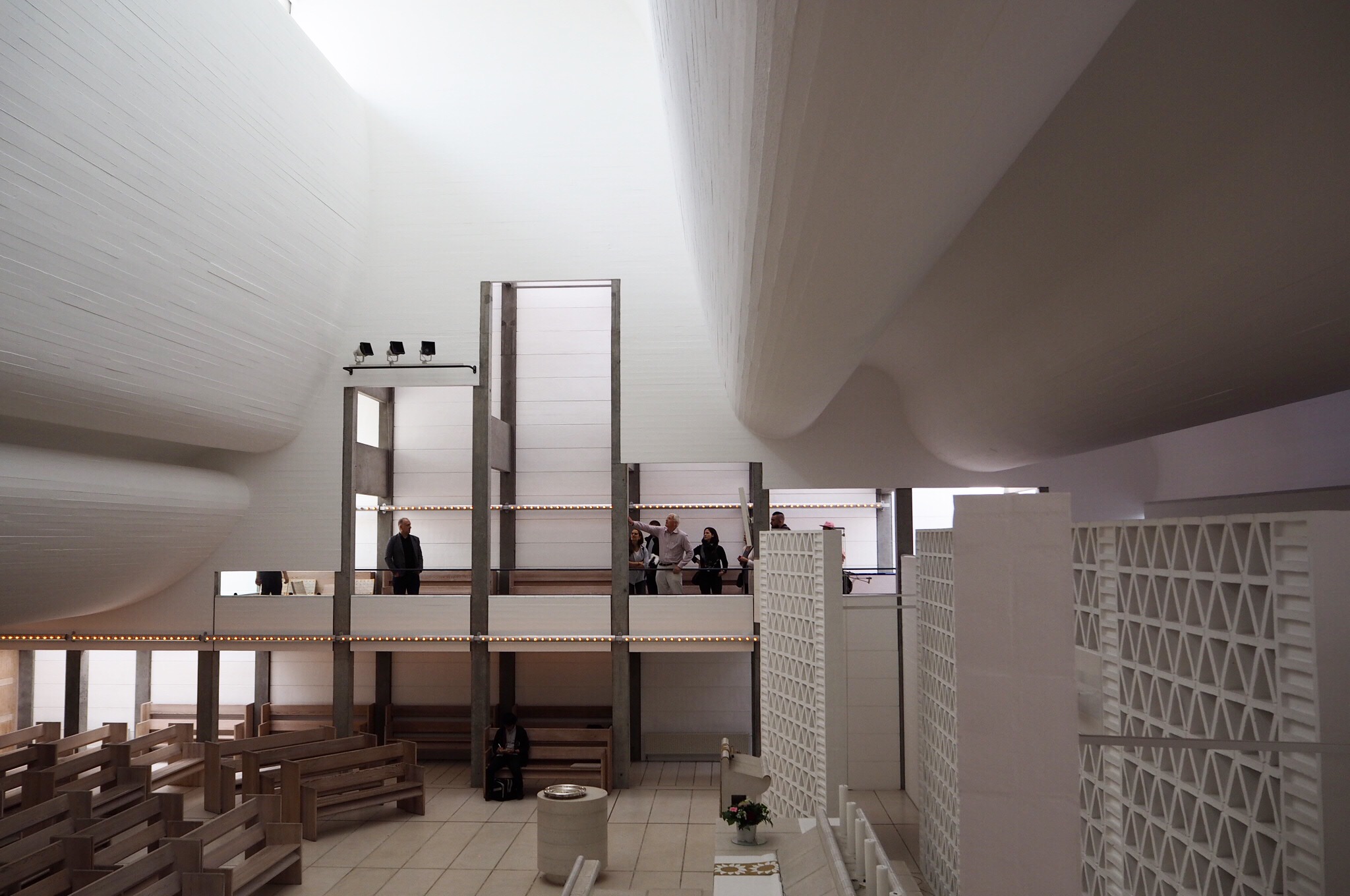
Some of us heard a quiet scuttling behind a box of cushions within the main chamber, there was a small bird trapped between the wall and box. We move the box and the bird, a little dazed, settled on one of the pews and fills the space with a short song that resonates through the space.
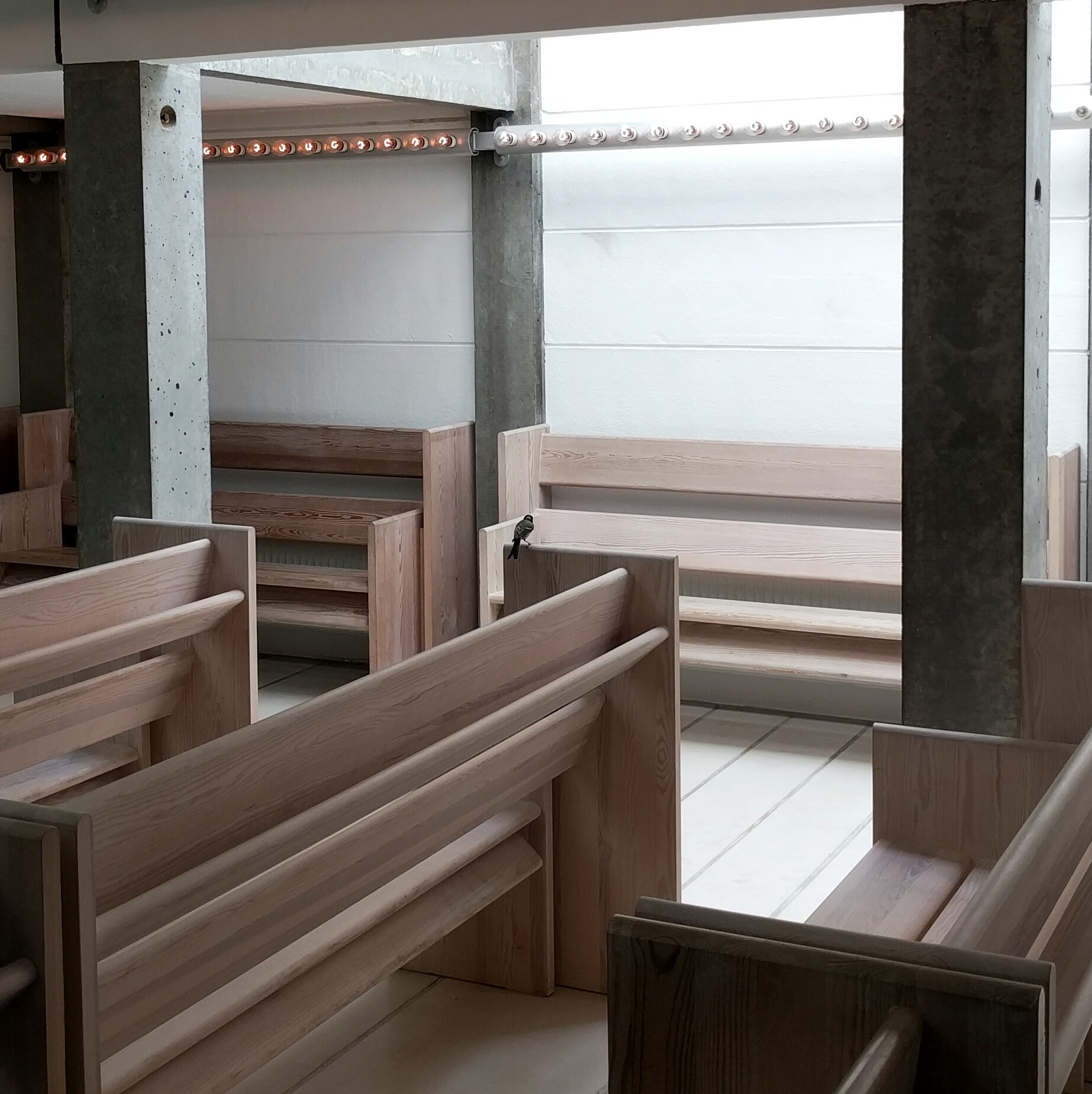
Weary, we bundle back into taxis and return to the hotel. Everyone retreats to their rooms for well deserved showers. Over dinner jet lag settles in and our conversation skills deteriorate, between one another this seems to work sufficiently.
A few stragglers spend what’s left of the evening in the hotel foyer making confused conversation with our friends we’ve convinced to meet us. We’ve come so far after all.
Mathew van Kooy